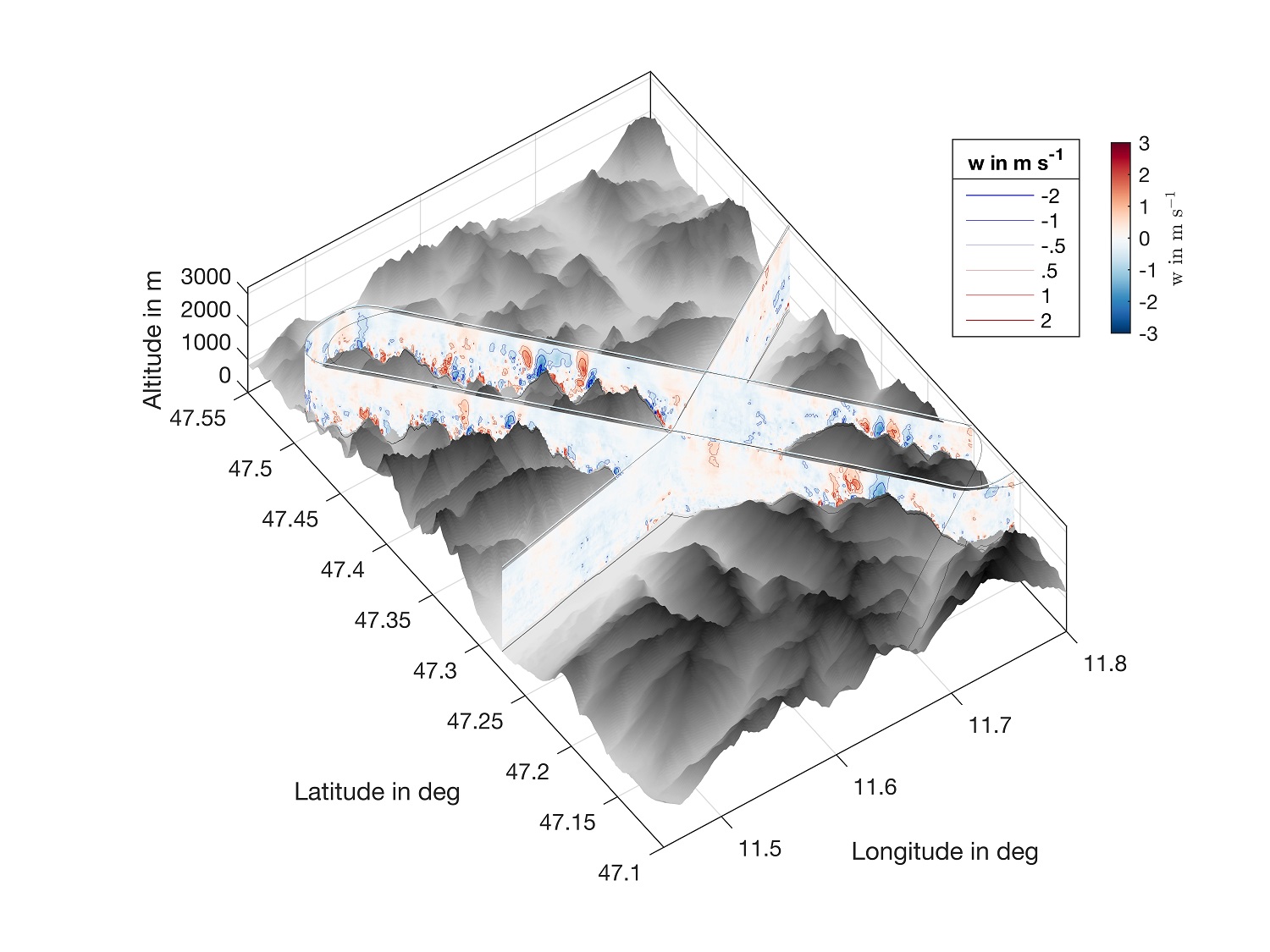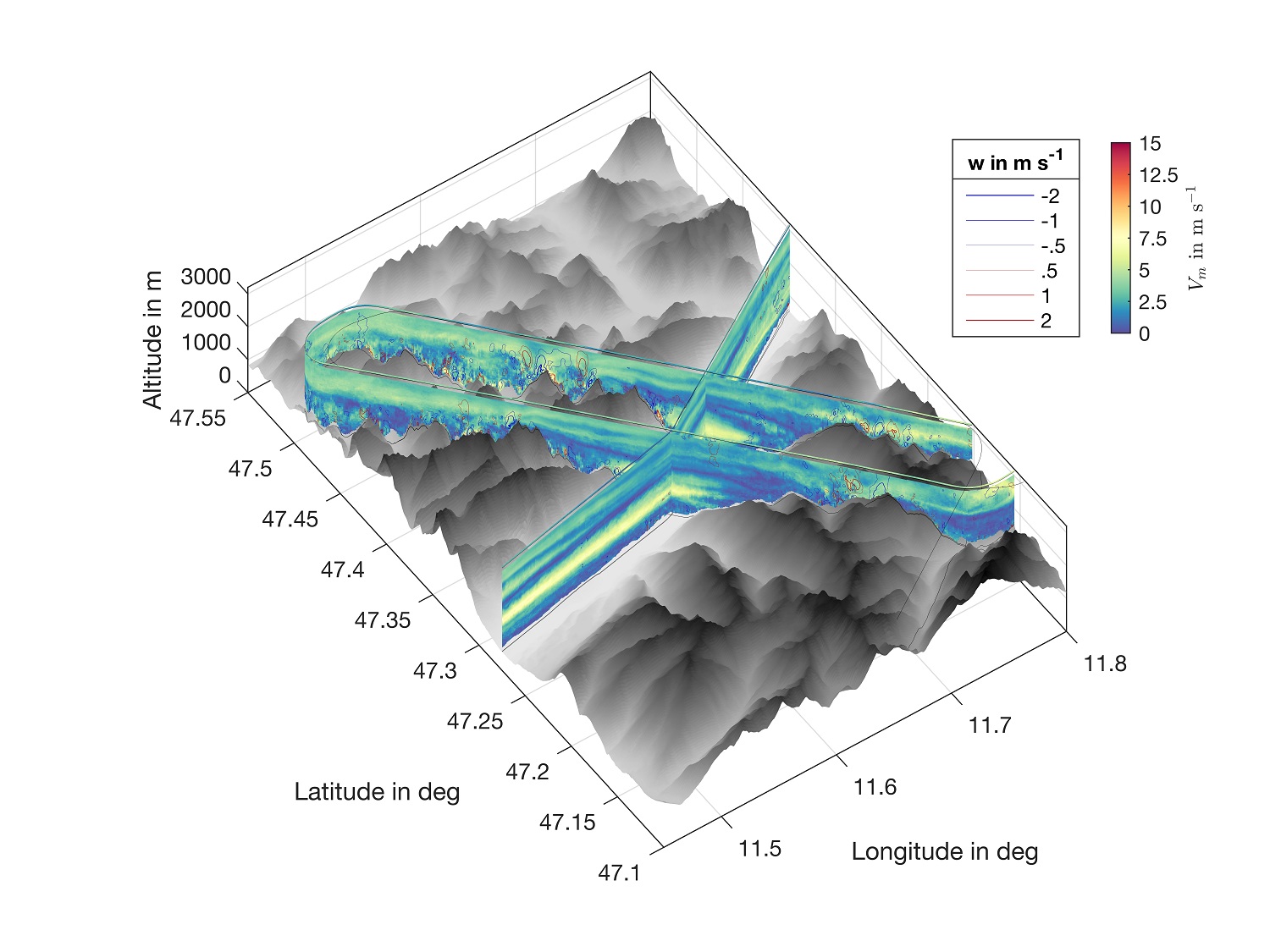AIRflows ‒ AIRborne fixed-beam lidar for wind measurements
Wind is the core variable of atmospheric dynamics. Accurate weather predictions and a better understanding of atmospheric dynamics require improved wind information, especially inside the turbulent planetary boundary layer (PBL). The Doppler lidar technology provides advanced capabilities for remote sensing of wind using laser radiation, also for mobile measurements from aircraft. Airborne Doppler lidar (ADL) provides targeted and spatially resolved wind measurements, which are crucial for the investigation of localized severe weather events, flow situations with high spatial variability, e.g. in complex terrain, or in inaccessible regions such as over water.
To extend the ground-based measurements of KITcube, a novel ADL system AIRflows (AIRborne fixed-beam lidar for wind measurements) has been developed at IMKTRO in collaboration with scientific and industrial partners. Up to now, ADL systems use a single Doppler lidar attached to a scanner to provide radial velocity measurements under multiple viewing angles. To reconstruct the 3D wind from the unidirectional radial velocity measurements, multiple viewing angles are needed. Simulation results have demonstrated that a multi-lidar system can achieve approximately one order of magnitude improved spatial wind measurement resolution as well as higher accuracy, compared to existing scanning systems (Gasch et al. 2023). Due to cost and size reductions of Doppler lidar units over the recent years, it has now become possible to construct an ADL system that uses multiple lidars with fixed-direction beams, instead of a single lidar with a scanning beam.
AIRflows implements the multi-lidar design by combining five compact and lightweight Doppler lidars into one system. It flies on the Cessna F406 research aircraft operated by the TU Braunschweig (TUBS, https://www.tu-braunschweig.de/iff). The lidar units are built by Abacus Laser GmbH (www.abacus-laser.com) and the rack unit, as well as the aircraft certification, are provided by ASI Aviation (www.asi-group.fr). AIRflows revolutionizes the field of airborne wind measurements by providing an order of magnitude improved spatial resolution as well as higher measurement accuracy.
As part of the first tests, flights to the Alps were conducted in preparation for the upcoming international TEAMx campaign (www.teamx-programme.org). The analyses of the first flights demonstate wind profiles at 100 m spatial resolution, allowing to resolve fine-scale 3D wind inside the PBL for the first time. AIRflows measurements across Alpine valleys provide previously unattainable insight into vertical wind (Fig. 1) as well as valley circulations (Fig. 2) in complex terrain.


Literature
Gasch, P., Kasic, J., Maas, O., & Wang, Z., 2023: Advancing airborne Doppler lidar wind profiling in turbulent boundary layer flow–an LES-based optimization of traditional scanning-beam versus novel fixed-beam measurement systems. Atmospheric Measurement Techniques, 16(22), 5495-5523.
